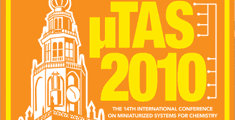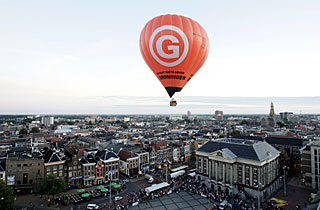  | ||||
|
About Groningen Conference Map Groningen Information Things to Do |
 About Groningen and The Netherlands
About Groningen and The NetherlandsHolland or The Netherlands? The Netherlands is often called Holland, because of the role the two western provinces North and South Holland played in its history. This region encompasses Amsterdam, Rotterdam, The Hague and other well-known Dutch cities such as Delft, Leiden and Haarlem. However, officially, it is the Kingdom of the Netherlands, consisting of three parts: the Netherlands itself in Western Europe and the Netherlands Antilles and Aruba in the Caribbean. Courtesy of Holland.com Language Dutch is the national language of Holland. However, English is spoken by almost everyone. In addition, many Dutch people speak German and French. Dutch is the mother tongue of well over 21 million Dutch people and Flemish people (Dutch- speaking nationals of Belgium). In addition, some 60,000 people in Northwest France speak a Dutch dialect. On the Netherlands Antilles and Aruba, which islands are a part of the Kingdom of the Netherlands, and in the former Dutch colony of Surinam, Dutch is used in government institutions and in schools. Because of the historical ties, many lawyers and historians in Indonesia speak Dutch. Dutch was the basis for Afrikaans, the language spoken in South Africa. Dutch has also influenced other languages, as shipping, agriculture and hydraulic engineering terms in various languages testify. Courtesy of Holland.com Groningen Groningen - with a population of about 185,000 - is the biggest city in the North of the Netherlands, located about 180 km from Amsterdam. It is the capital of the Groningen province and commonly known as "Stad" in the local dialect, which simply translates as City, because Groningen is the only large city in the province. Groningen is also considered a university city, inhabited, on average, by about 50,000 students. The city was founded on the northernmost point of the Hondsrug area. The oldest document referring to Groningen's existence dates from 1040. However, the city already existed long before then: the oldest archaeological traces found are believed to stem from the years 3950 BC - 3720 BC, although the first major settlement in Groningen has been traced back to the 3rd century AD. In the 13th century, when Groningen was an important trade centre, its inhabitants built a city wall to underline its authority. The city had a strong influence on the surrounding lands and made its dialect a common tongue. The most influential period of the city was the end of the 15th century, when the nearby province of Friesland was administered from Groningen. During these years, the Martini Tower was built, which loomed over the city at (then) 127 metres tall, making it the highest building in Europe at the time. The city's independence came to an end when it chose to join forces with the Spanish during the Eighty Years' War in 1594. It later switched sides, joining the Republic of the Seven United Netherlands. In 1614, the University of Groningen was founded, initially only for religious education. In the same period the city expanded rapidly and a new city wall was built. That same city wall was tested during the Third Anglo-Dutch War in 1672, when the bishop of Münster, Bernhard von Galen, attacked the city fiercely. The city walls resisted, an event that is celebrated with music and fireworks on 28 August (as "Gronings Ontzet" or "Bommen Berend"). The city did not escape the devastation of World War II. In particular, the main square, Grote Markt, was largely destroyed in April 1945, at the Battle of Groningen. However, the Martinitoren, its church, the Goudkantoor, and the city hall were not damaged. The battle there lasted several days. Courtesy of Wikipedia.org |
|||